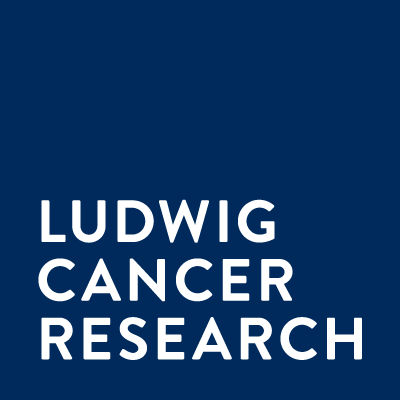Request Demo
Last update 08 May 2025
MMP2 positive Glioblastoma
Last update 08 May 2025
Basic Info
Synonyms- |
Introduction- |
Related
2
Drugs associated with MMP2 positive GlioblastomaTarget |
Mechanism EphA3 inhibitors |
Active Org. |
Originator Org. |
Active Indication |
Inactive Indication |
Drug Highest PhasePhase 2 |
First Approval Ctry. / Loc.- |
First Approval Date20 Jan 1800 |
Target |
Mechanism CD19 inhibitors [+2] |
Active Org. |
Originator Org. |
Active Indication |
Inactive Indication- |
Drug Highest PhasePhase 1 |
First Approval Ctry. / Loc.- |
First Approval Date20 Jan 1800 |
3
Clinical Trials associated with MMP2 positive GlioblastomaNCT05627323
A Phase 1b Study to Evaluate CHM-1101, a CAR T-Cell Therapy With a Chlorotoxin Tumor-Targeting Domain for Patients With Matrix Metallopeptidase 2 Positive (MMP2+) Recurrent or Progressive Glioblastoma Multiforme
This is a phase 1b study to evaluate the safety of chimeric antigen receptor (CAR) T cells with a chlorotoxin tumor-targeting domain (ie, CHM-1101, the study treatment) to determine the best dose of CHM-1101, and to assess the effectiveness of CHM-1101 in treating MMP2+ glioblastoma that has come back (recurrent) or that is growing, spreading, or getting worse (progressive).
Start Date06 Jun 2023 |
Sponsor / Collaborator |
NCT04214392
A Phase 1 Study to Evaluate Chimeric Antigen Receptor (CAR) T Cells With a Chlorotoxin Tumor-Targeting Domain for Patients With MMP2+ Recurrent or Progressive Glioblastoma
This phase I trial studies the side effects and best dose of chimeric antigen receptor (CAR) T cells with a chlorotoxin tumor-targeting domain in treating patients with MPP2+ glioblastoma that has come back (recurrent) or that is growing, spreading, or getting worse (progressive). Vaccines made from a gene-modified virus may help the body build an effective immune response to kill tumor cells.
Start Date26 Feb 2020 |
Sponsor / Collaborator |
NCT03374943
A Phase I Safety and Bioimaging Trial of KB004 in Patients With Glioblastoma
This is a study of drug KB004 in patients with recurrent glioblastoma (GBM). Eligible patients with measurable tumours will receive an initial trace (5mg) dose of zirconium labelled KB004 (89ZrKB004) on day 1 followed by sequential Positron emission tomography (PET) imaging over 1 week to determine its biodistribution into GBM and normal tissues. Safety assessments and pharmacokinetic (movement of drug) sampling will also be undertaken over this time. On Day 8, patients commence weekly KB004 infusions over 2 hours with standard premedications. Three cohorts are planned in this study (3.5mg/kg, 5.25 mg/kg, 7.9 mg/kg; additional dose levels may be explored based on toxicity, efficacy and biodistribution data as determined by the safety monitoring committee). On day 36, patients receive both 89ZrKB004 and KB004, allowing assessment of receptor occupancy to guide recommended phase two dose (RPTD) determination. Response rate (RANO) and survival data will be collected and patients benefiting may continue KB004 treatment until disease progression. Primary objective: to determine the toxicity and recommended phase two dose (RPTD) of KB004 in patients with advanced Glioblastoma (GBM).
Secondary objectives: to determine the biodistribution and pharmacokinetics of 89ZrKB004; to determine frequency of EphA3 (ephrin receptor A3) positive glioblastoma in archival specimens and by 89ZrKB004 scans, and correlate with known biomarkers; to describe response rates per RANO criteria (Response Assessment in Neuro-Oncology Criteria) and pharmacodynamics following KB004 infusion; Exploratory objectives: to perform exploratory analysis between clinical outcomes and biodistribution/Pharmacokinetics (PK)/pharmacodynamics (PD) data, including from matched biopsies.
Secondary objectives: to determine the biodistribution and pharmacokinetics of 89ZrKB004; to determine frequency of EphA3 (ephrin receptor A3) positive glioblastoma in archival specimens and by 89ZrKB004 scans, and correlate with known biomarkers; to describe response rates per RANO criteria (Response Assessment in Neuro-Oncology Criteria) and pharmacodynamics following KB004 infusion; Exploratory objectives: to perform exploratory analysis between clinical outcomes and biodistribution/Pharmacokinetics (PK)/pharmacodynamics (PD) data, including from matched biopsies.
Start Date05 Dec 2017 |
Sponsor / Collaborator |
100 Clinical Results associated with MMP2 positive Glioblastoma
Login to view more data
100 Translational Medicine associated with MMP2 positive Glioblastoma
Login to view more data
0 Patents (Medical) associated with MMP2 positive Glioblastoma
Login to view more data
6
Literatures (Medical) associated with MMP2 positive Glioblastoma17 Nov 2018·Nutrition and CancerQ4 · MEDICINE
Epigallocatechin Gallate Preferentially Inhibits O6-Methylguanine DNA-Methyltransferase Expression in Glioblastoma Cells Rather than in Nontumor Glial Cells
Q4 · MEDICINE
Article
Author: Zhang, Nu ; You, Chao-Guo ; Sheng, Han-Song ; Zheng, Xue-Sheng ; Xie, Chao-Ran
01 Oct 2016·Journal of the Chinese Medical AssociationQ4 · MEDICINE
Sox2, a stemness gene, regulates tumor-initiating and drug-resistant properties in CD133-positive glioblastoma stem cells
Q4 · MEDICINE
Article
Author: Pin-I Huang ; Yi-Yen Lee ; Yi-Wei Chen ; Wai-Wah Wu ; Ming-Teh Chen ; Yi-Ping Yang ; Chi-Shuan Huang ; Wen-Shin Song ; Shou-Dong Lee ; Wei-Hsiu Liu ; Wen-Liang Lo ; Kai-Hsi Lu
09 Sep 2015·ACS Applied Materials & InterfacesQ2 · MATERIALS SCIENCE
Chlorotoxin-Conjugated Multifunctional Dendrimers Labeled with Radionuclide 131I for Single Photon Emission Computed Tomography Imaging and Radiotherapy of Gliomas
Q2 · MATERIALS SCIENCE
Article
Author: Zhao, Jinhua ; Guo, Lilei ; Zhu, Jingyi ; Cheng, Yongjun ; Zhao, Lingzhou ; Tang, Yueqin ; Shi, Xiangyang ; Xiong, Zhijuan
Analysis
Perform a panoramic analysis of this field.
login
or

AI Agents Built for Biopharma Breakthroughs
Accelerate discovery. Empower decisions. Transform outcomes.
Get started for free today!
Accelerate Strategic R&D decision making with Synapse, PatSnap’s AI-powered Connected Innovation Intelligence Platform Built for Life Sciences Professionals.
Start your data trial now!
Synapse data is also accessible to external entities via APIs or data packages. Empower better decisions with the latest in pharmaceutical intelligence.
Bio
Bio Sequences Search & Analysis
Sign up for free
Chemical
Chemical Structures Search & Analysis
Sign up for free


